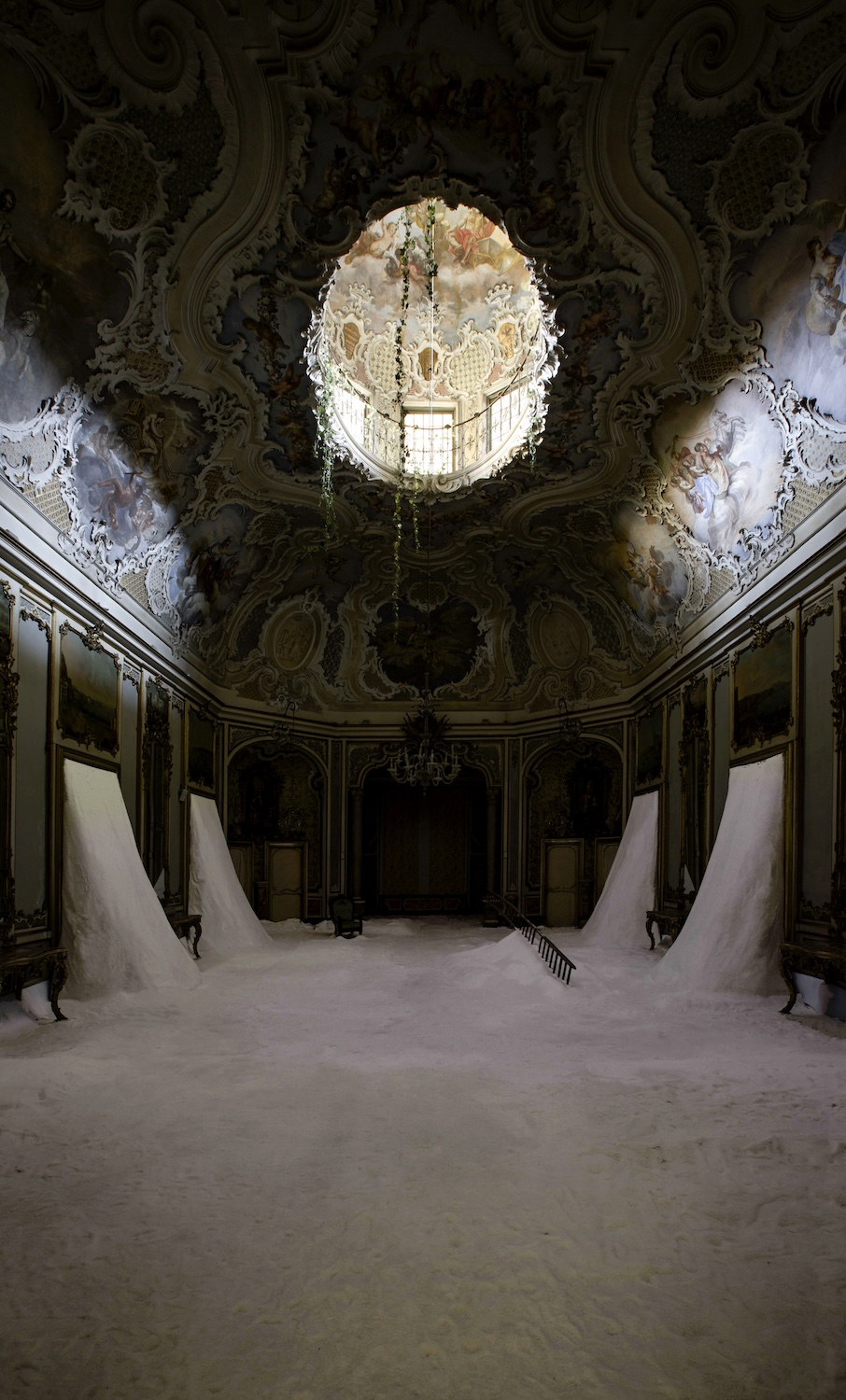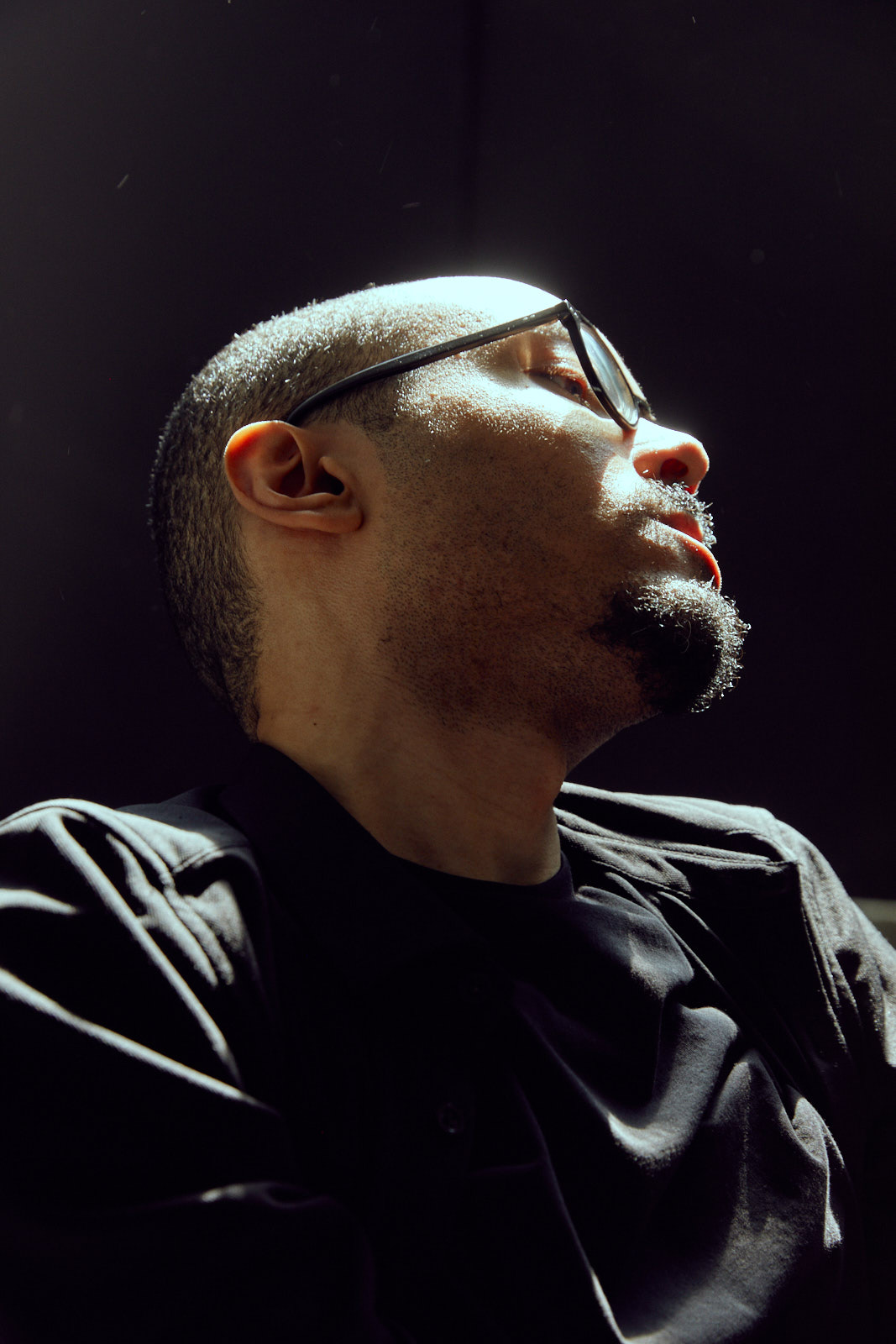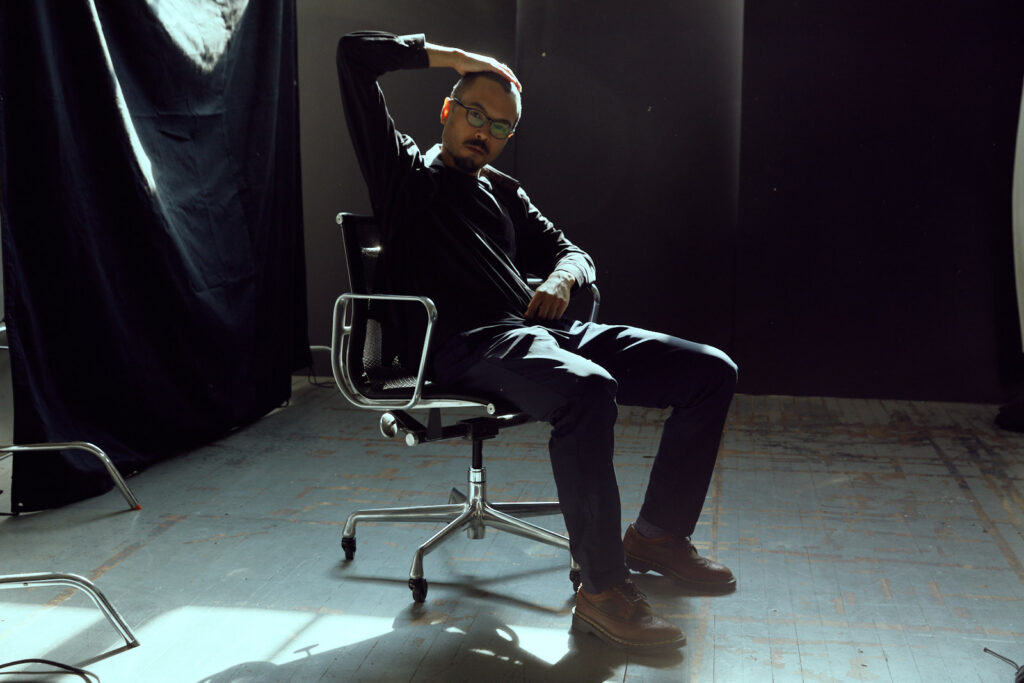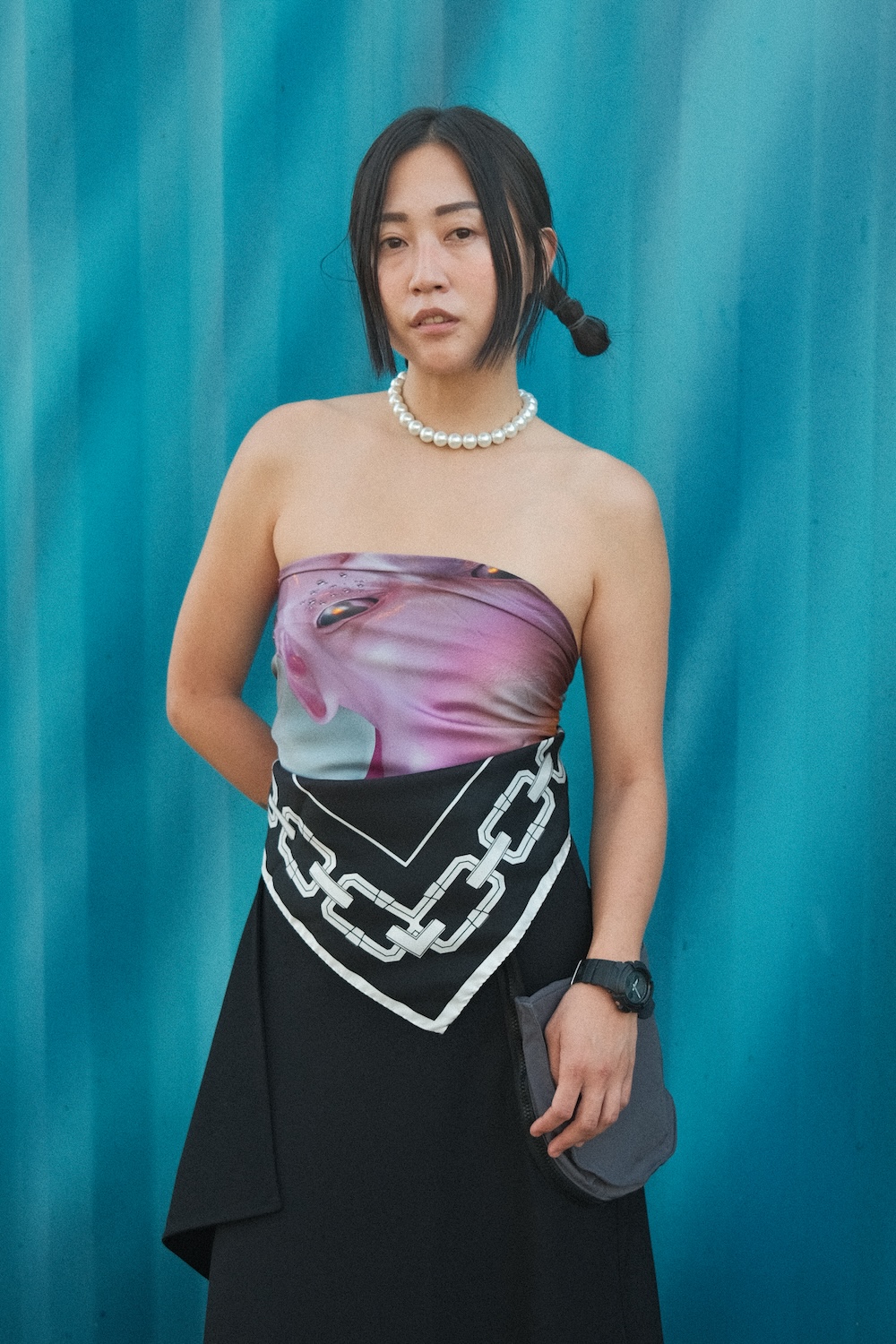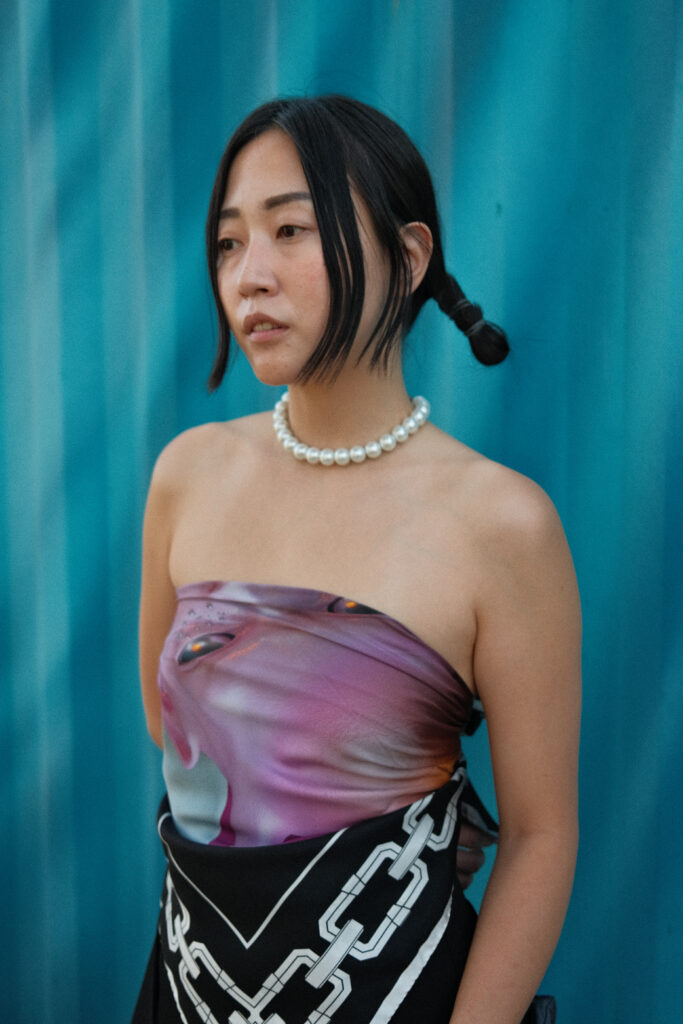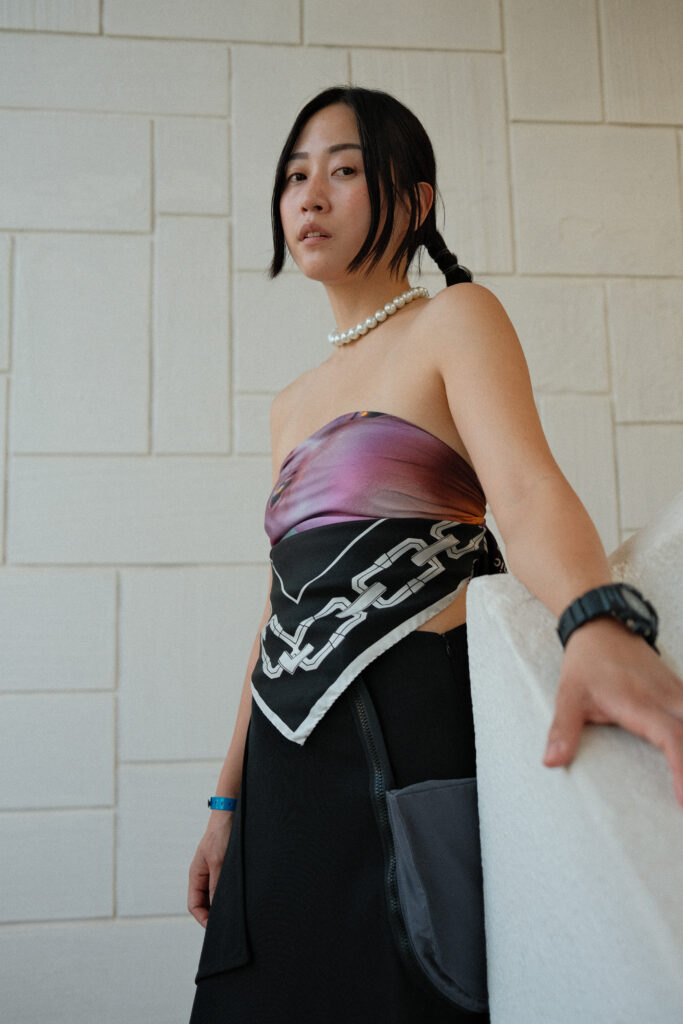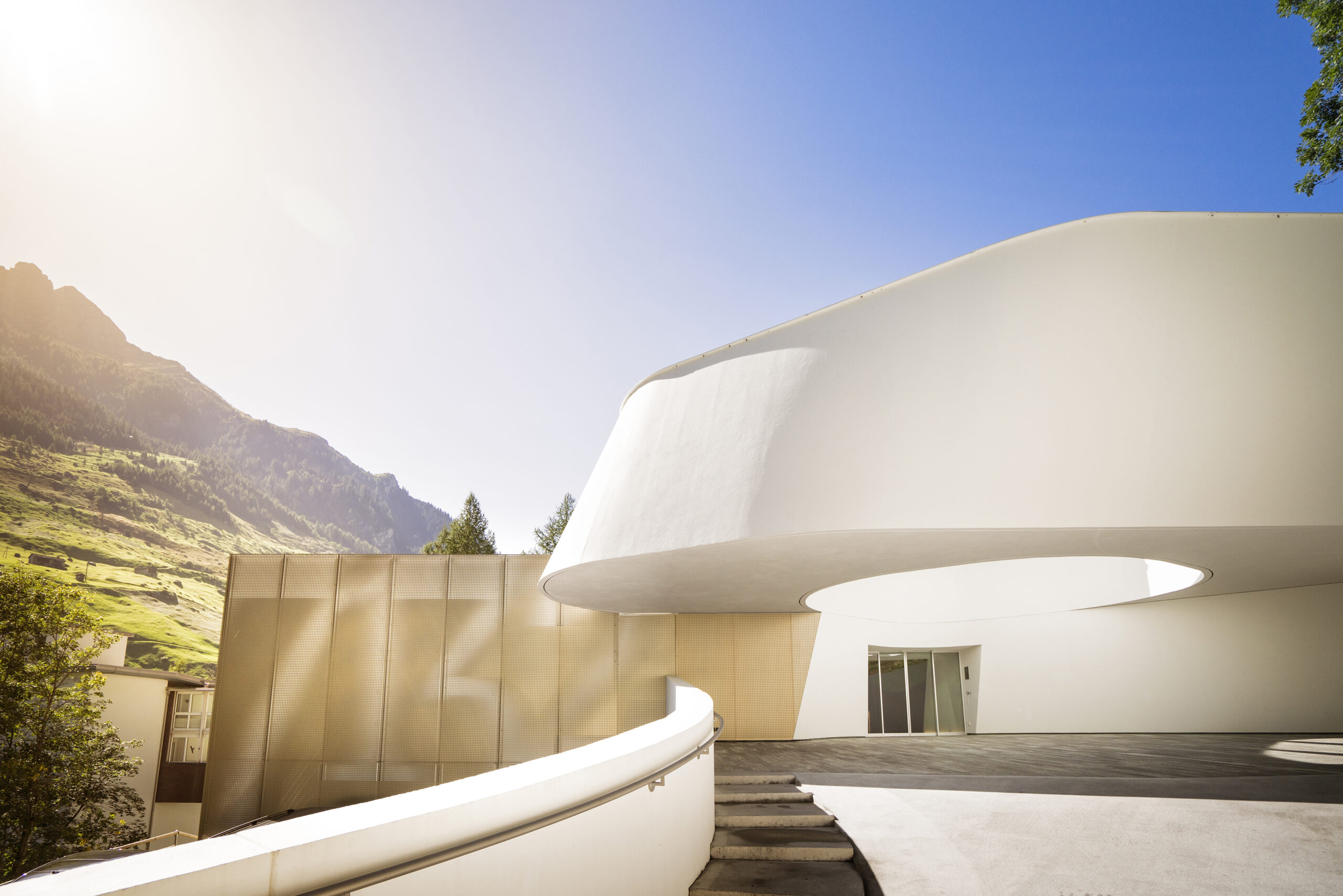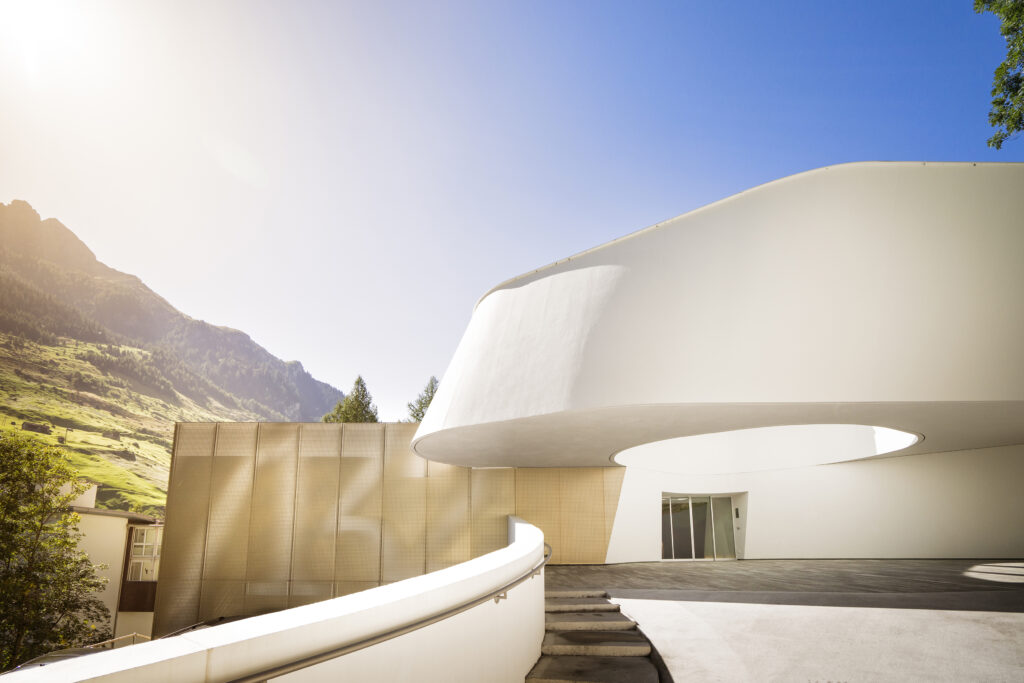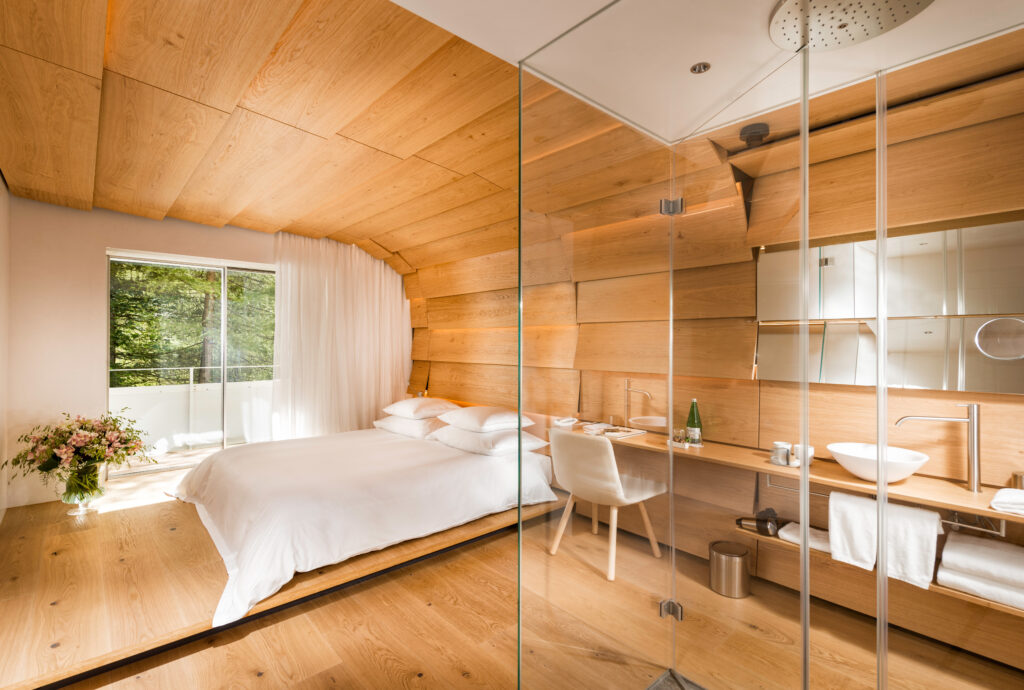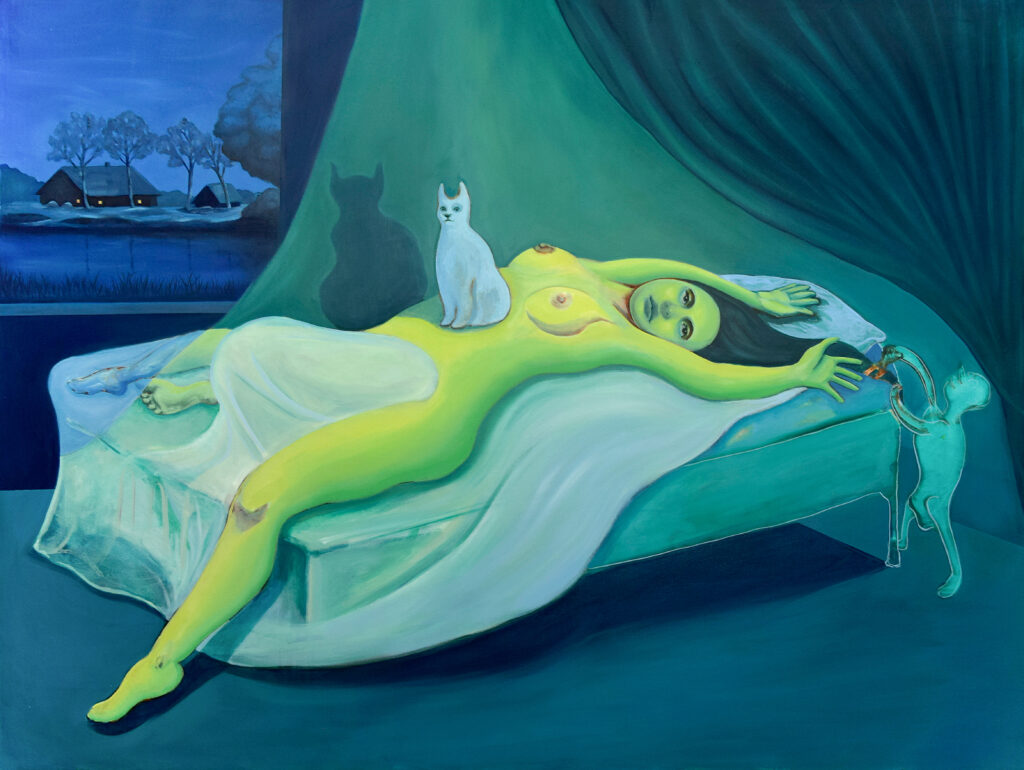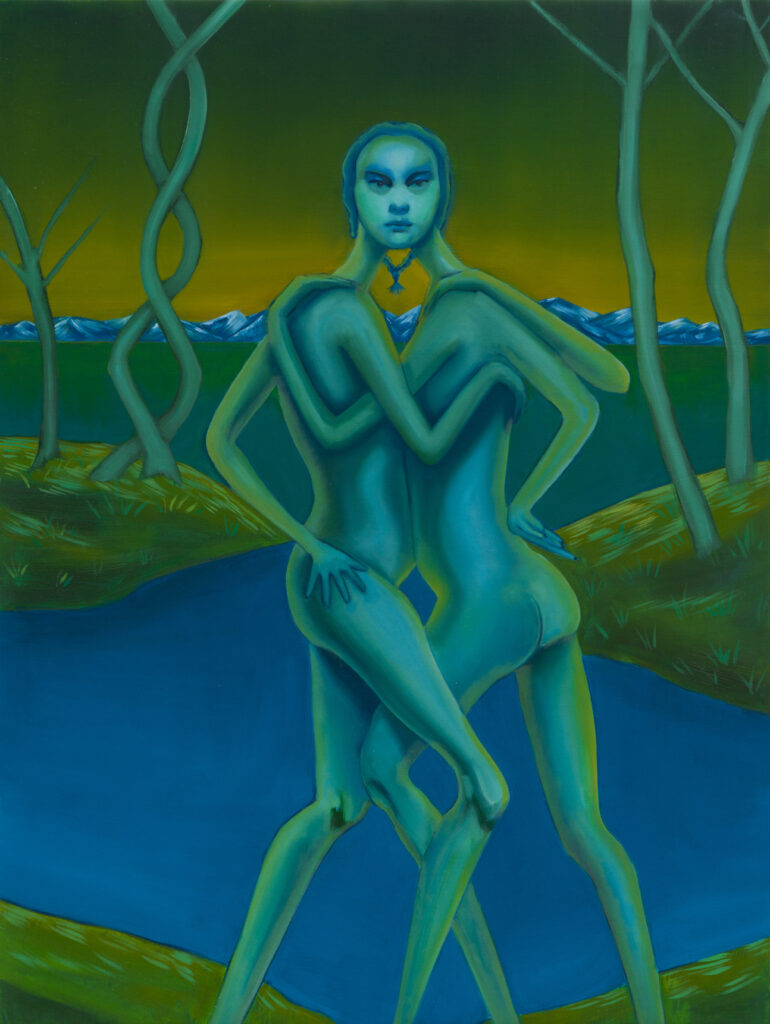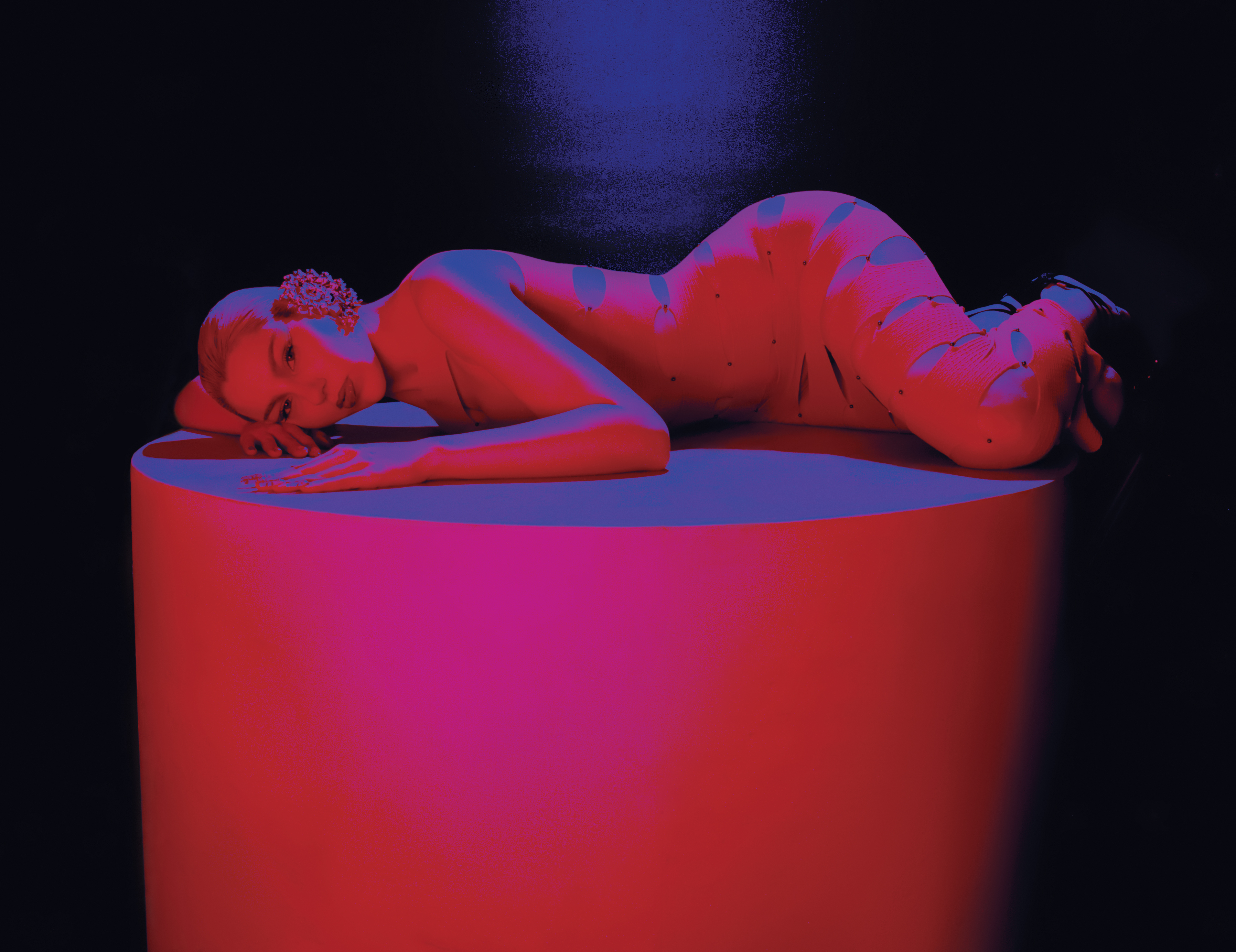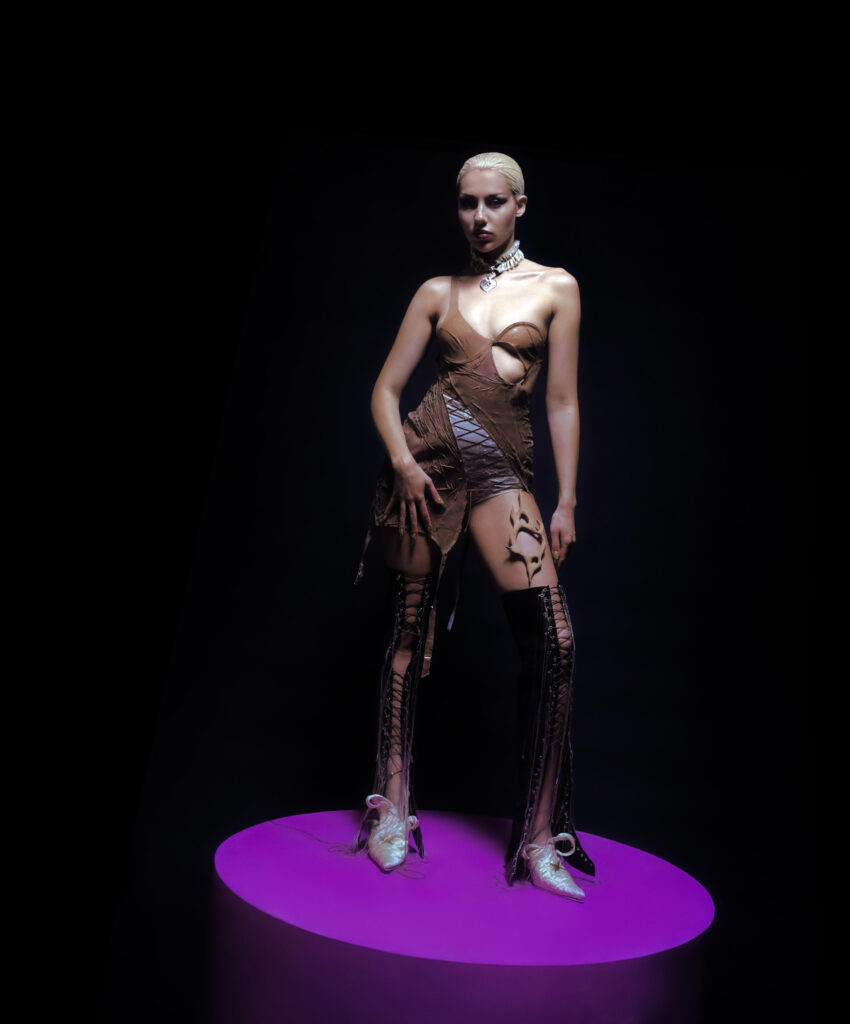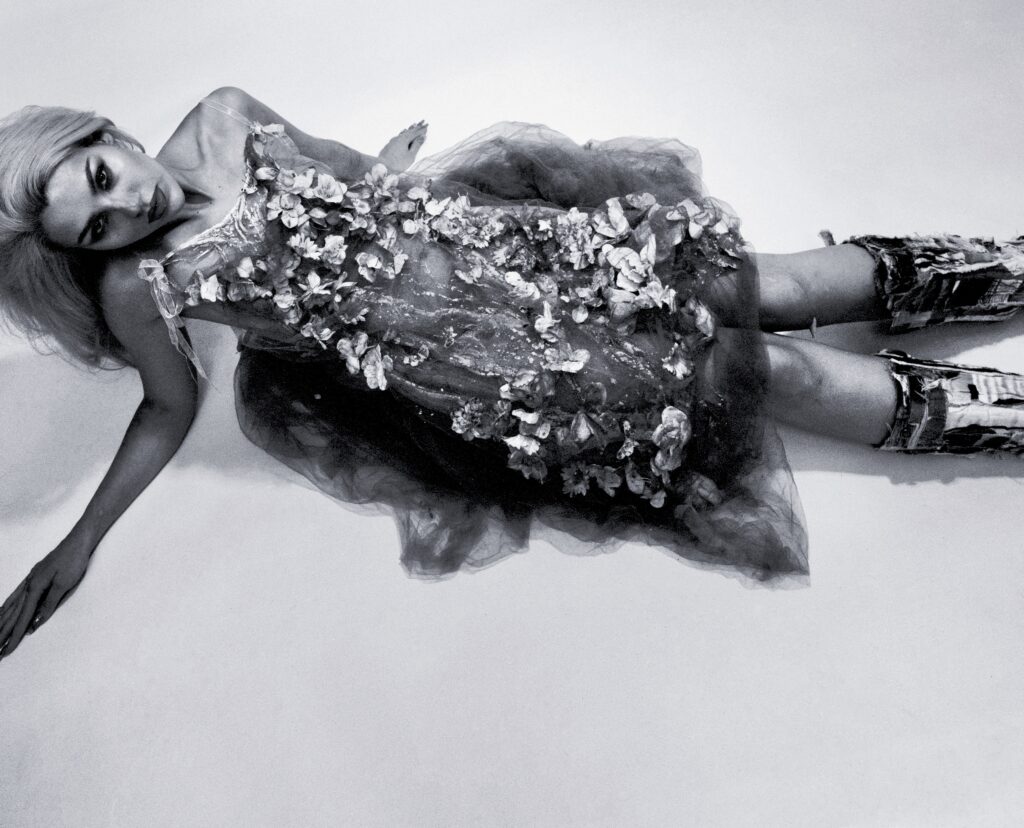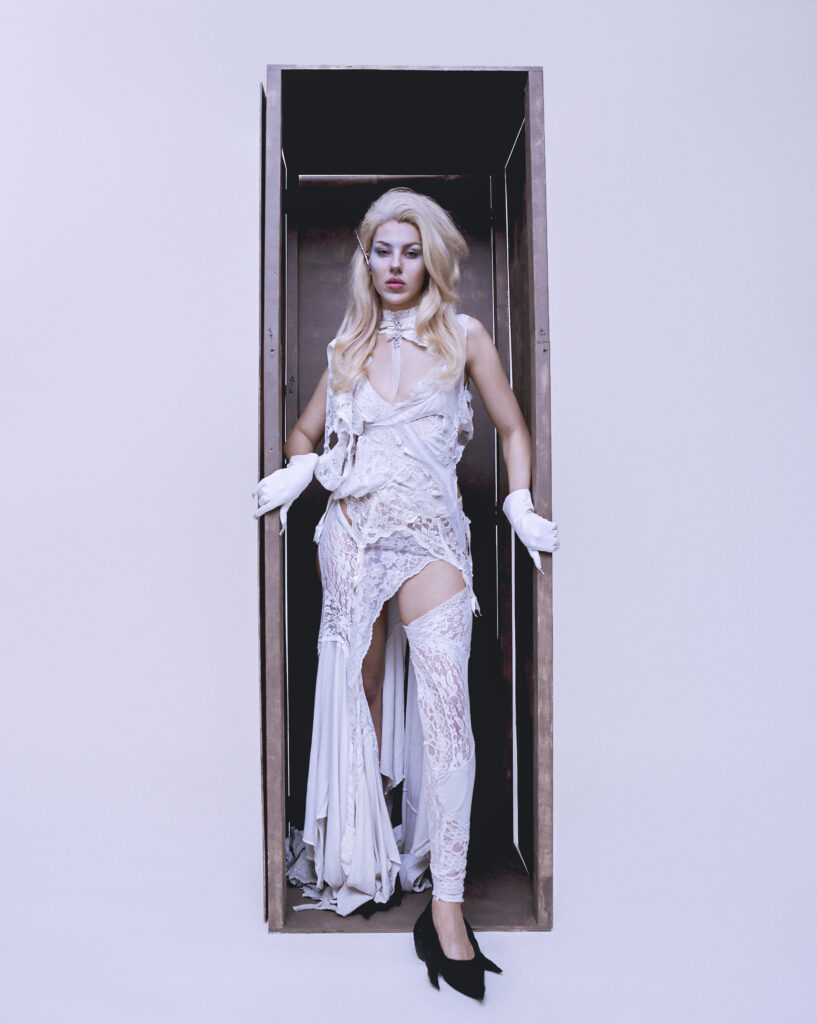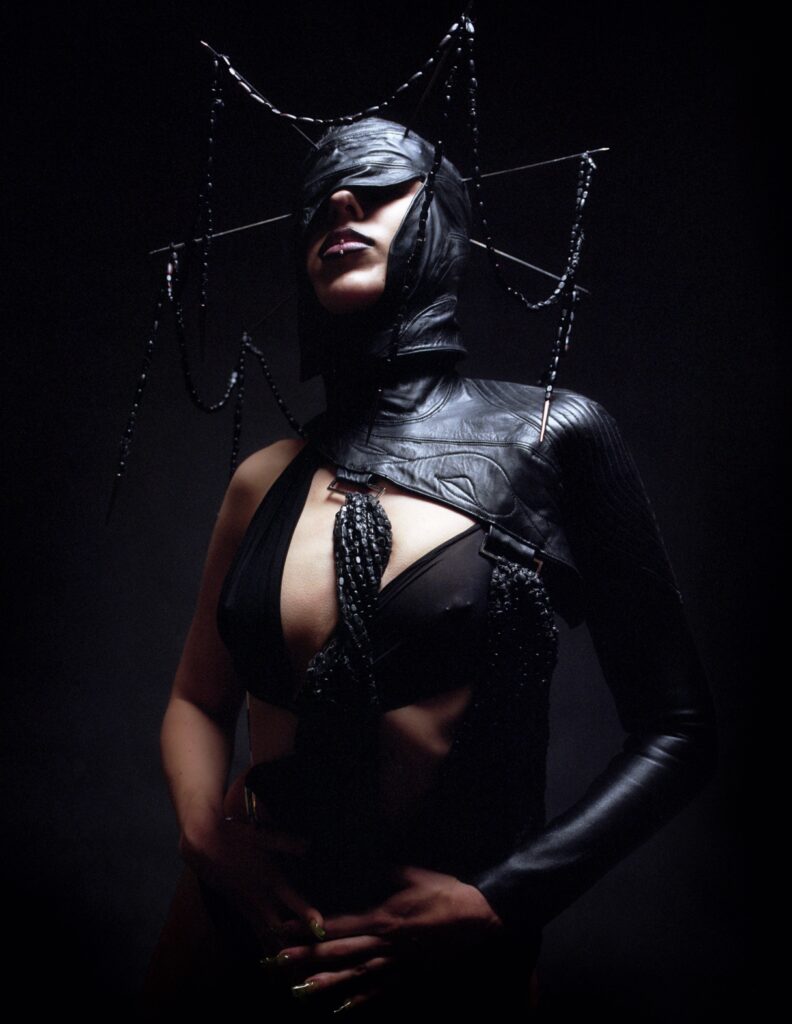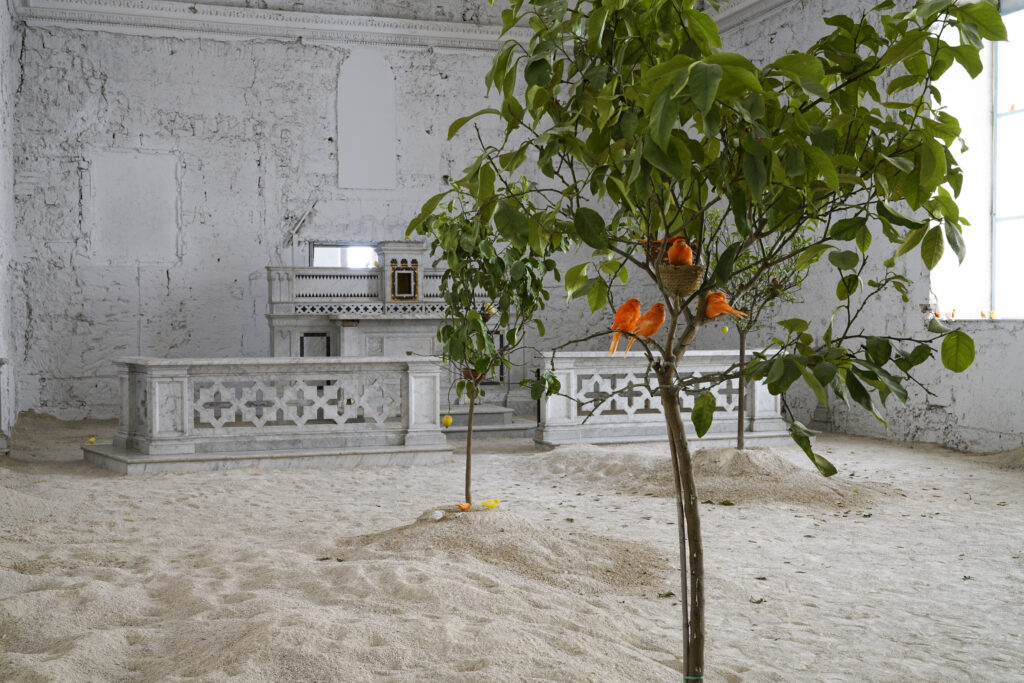
On the responsibilities of the artist and the weight of history
Emilio Isgrò once stated that the role of the artist is that of navigating society out of crisis. If we see in his words any validity, then, we can’t help but see Gian Maria Tosatti as one of the most distinguished and brave admirals of the fleet that is now busy trying to sail us through the stormy waters of the present.
Don’t let his beard fool you, he’s far from a ruthless buccaneer adventuring across the seas of the art world for mere pragmatic interests. On the contrary, he seems to have embraced a mission with broad horizons and rich in dialogue, as highlighted by his work as art director of the Rome Quadriennale and even when, last year, he became the first solo artist to curate the Italian pavilion at the Venice Biennale.
Born in the eternal city in 1980, Tosatti indeed faces the art industry with the deep knowledge and critical consciousness of a historian, or to put it in his own words as someone whose first, priceless schooling was the daily stroll to school across the decaying and majestic beauty of the Imperial Fora.
However, Tosatti has succeeded in escaping the academic redundancy that often defines those too knowledgeable about their own field, by giving birth to a distinctive and globally-acclaimed body of work. His visual art focuses on long-term, often site-specific projects that question the state of our society and identity, equally touching upon politics and spirituality.
Listening to him discerning about his practice makes you reconcile with art, as a discipline rather than as an industry, something that has been for way too long overshadowed by its financial, voyeuristic and gossipping side. The conversation that sparks with Tosatti acquires a profound stance, spiritual at times, for leading us to question ourselves on the role of the artist in history and on its political duties to capture the present, willing or not.
Lorenzo Ottone: You were born and raised in Rome, now you live in Naples. How influential is the weight of the past and history, both artistically and politically, exerted by these two cities for an artist like you who investigates the present?
Gian Maria Tosatti: Actually, it is not a burden. In fact, it is the exact opposite. The strong presence of historical and cultural elements in the identity of the city in which I was born and in that of the city where I live exerts a positive and helpful influence in the interpretation of phenomena pertaining both to the present and the future. In thousands of years of their history, men have not changed. There is a beautiful work by Andrea Mastrovito entitled Le jardin des histoires du monde. It is a story in which it is not clear at what moment in history certain events take place, because they continue to happen, cyclically. Living in a city with such a great past is like having a good schooling behind you. It makes decoding reality easier.
Lorenzo Ottone: The project that in recent years has defined your artistic research the most is Il mio cuore è vuoto come uno specchio (My heart is empty like a mirror), which aims to reflect on the crisis of democracy in multiple areas of the world. Is there any willingness to trigger political thoughts and actions by capturing our zeitgeist? Or, in other words, to what extent can artists subtract themselves from their present and from the broader socio-political context?
Gian Maria Tosatti: An artist can never escape his historical present. Even ascetic figures like Morandi are imbued with the feeling of the time in which they lived. Morandi’s painting is only possible because of that specific civil and cultural context. The question is not, therefore, whether or not one wants to give one’s work a political subtext, but to accept the fact that the artist’s role is to give back, with his works, translations of the spirit of the time, which encompasses every aspect of our civilisation. I simply carry out my task, the work that was assigned to me when I decided to join an order as ancient as that of the artists.

Lorenzo Ottone: You once stated that the spark – to a certain extent a vocation – that led you to make art came from a dream. How much room is there now for the sphere of dreams in your practice and how strong, on the contrary, is the willingness to capture the present with pragmatism? And how about spirituality?
Gian Maria Tosatti: Actually, as psychoanalysis teaches us, there is a certain continuity between reality and the dream. Sometimes what we are unable to tell ourselves in the mirror, we end up addressing through another reflective surface, which is that of the dream. My work is aware of this and, as a consequence, encompasses elements retaining a strong connection with historical reality – for example, creating a work in the centre of the Kurdish quarter of Istanbul while it was being demolished by the authorities – as well as markedly visionary horizons – such as filling an entire floor of the building in which we set up that Turkish work with snow, in June.
Lorenzo Ottone: Since we live in a fragmented society, rich in micro-scenes and ‘bubbles’, each with their own influencers and micro-celebrities, can art still cater the role of simulacrum of the present? Can it still narrate universal truths able to reach a broad audience?
Gian Maria Tosatti: Art can certainly do that. What, on the other hand, is very disturbing is this disordered polyphony of voices belonging not so much to the many ‘art lovers’, but to people who understand very little about art and demonstrate this by cheering for some artists and hating others, speaking well of some and badly of others, supporting some and doing everything to discredit others. All this has profoundly changed the art world compared to past decades. In the recent golden years of Italian art, the 1960s and 1970s, one certainly preferred some artists to others, but one had respect for all of them. They were held in esteem because, even if they were far from our specific inclinations (conceptualism, figurative painting, sound-art, performance), they were recognised as having authority and mastery in their field. Today, however, artists are seen as a band of miracle workers, runaways, who owe everything to the support of some gallery owner or patron. If we esteem them, they are our ‘protégés’ (hence, inferiors anyway), if we do not esteem them, they are ‘impostors’.
The sad thing is that this very mindset now applies not only to those who came to the art world for reasons of social status, but also to the professionals themselves. There are curators who snobbishly refuse to go and see the work of certain artists, as if those works did not deserve the attention of their gaze. Even worse, there are artists who talk about other artists as if they were thieves, without realising that, in doing so, they are discrediting their own work, because as Rilke said, even just to get a single verse out of the soul requires discipline that still deserves our respect and attention. Personally, I am happy that through Quadriennale, in this three-year period, I have brought attention to the work of many – regardless of preference – and that I have also fought to critically and financially support the work of other artists who have publicly spoken very ungenerous words against me or have taken political positions by signing petitions against me. I believe, in this way, that I have done what was right, distancing myself from an opportunistic and vulgar bourgeois art system.

Lorenzo Ottone: Over the years, you have adopted multiple techniques and chosen a range of mediums to express yourself, even touching upon music. I am thinking about the gramophones that you have also played on stage with Vinicio Capossela. How much does multidisciplinarity define your artistic identity and practice?
Gian Maria Tosatti: Italian artists have always been extremely eclectic. Think of Leonardo Da Vinci, think of Bernini, a fantastic theatre director as well as architect, painter and sculptor. Think of Michelangelo Buonarroti’s verses that we have studied together with those of the greatest poets at the turn of the 15th and 16th centuries. And then again to Pasolini, film director, playwright, poet, columnist for Corriere della Sera. It is the specificity of our cultural tradition. Since the art system has become mainly Anglo-American, we tend to compartmentalise more. I’ve got nothing against it, but I do not belong to that cultural tradition. And if we all conformed to the same model, I think we would lose almost all of what makes us rich because we are different.
Italy has felt like a province for a long time. It is the fault of wrong choices made by our cultural industry, which self-destructed in the 1980s, and of many supposed intellectuals – I am thinking of several curators with international careers – who have been blatantly ashamed of their country, as if Italy actually was a remote province of the artistic universe. Fortunately, this is not the case. Italy has had little to no influence for forty years, it is true, but this is an insignificant amount of time if compared to the history of our civilisation. The strength of our cultural specificity is still great. And it is a good thing that today other countries or continents – I am thinking of Africa, which is working magnificently – have also raised their heads in the global cultural system, because this can lead to exciting comparisons and to writing fantastic new chapters of art history together.
However, this is only possible if – just like the Africans – we can rediscover pride in our own specificities. Italians are cultural fantasists, because we are born immersed in millennia of stratifications. Simply think of the home-to-school route we take in the morning when children. It can be worth more than a degree at Harvard, because if every day we walk across, as was my case, the centre of Rome, eventually, we will not only get to know the Imperial Fora stone by stone, but all that knowledge will be inseparable from what we are. Of course, one has to have that interest. If one wants to be a footballer, perhaps, they will walk straight across temples, head down, as if they lived in Texas.
Lorenzo Ottone: Speaking of the requirements an artist must have, in recent years your career has been enhanced by the appointment as artistic director of the Quadriennale di Roma. How does Tosatti, the artistic director and curator, differ from Tosatti the artist?
Gian Maria Tosatti: When I was a boy I had a particular regard for a great poet, T. S. Eliot. As publishing director of Faber & Faber he played a pivotal role in shaping Anglophone literature in the first half of the 20th century. The same can be said of Calvino, who played the same role at Einaudi. But in the 20th century, there were hundreds of artists who took on managerial roles within the cultural system. And thank goodness for that! Pirandello was the director of the Teatro degli Artisti in Rome. And the Quadriennale was founded by an artist, the only one, by the way, to have directed it, in its entire history. Today, the idea of an artist taking on such a role sounds like heresy to many. Instead, anyone who knows a little about art history knows how important the theoretical contributions of artists are.
I do not want to go as far quoting illustrious figures such as Vasari or Leon Battista Alberti, the manifestos of the 20th century avant-gardes or a book such as The Art of the Novel by Milan Kundera, to make us realise that a world in which artists are confined to their henhouse, brooding over an egg only for critics and dealers to pick up, makes a poor and weak art system. Exactly like the one in which we are immersed today. I do not believe that my strong and stubborn commitment in the contrary direction will change much, but I am simply not willing to be a simple code, good for an infantilised society.
Lorenzo Ottone: To draw a conclusion to our chat, how is the heart of Gian Maria Tosatti today? Still empty like a mirror or full?
Gian Maria Tosatti: As many have said, from Fellini to Boetti – even Totò in a magnificent interview for [Italian state television] RAI, which can be easily found on YouTube -, in every artist there are two people. There is the actual artist and then there is the other, the one who takes him around. Fellini used to say that he would accompany Federico to the places he wanted to go and watch him do things that he would never do. I have learned these things over the years, reading their memoirs, but since I was a kid I have always said that I push Gian Maria’s wheelchair, I take him where he asks me to. Only as an adult, though, I understood what I exactly meant since then. At forty-three, I am an intellectual, a public figure who takes a stand in the newspapers, a cultural manager who knows how to renovate an institution, who has a strong sense of ethics and politics, whose heart is full of fantastic relationships with other intellectuals or people from the street whom I have always helped and supported as an activist. On the other hand, He, the other, is an artist, a man whom I do not understand, whom I do not want to understand, whose ethics are paradoxical, dark and crystalline, whose heart is always empty, ravenous and devoured at the same time. He is thin, very thin. I am attached to him and my duty is not to abandon him.
Credits
Terra dell’ultimo cielo, 2016. Site specific installation.
My dreams, they’ll never surrender, 2014. Site specific installation.
Il mio cuore è vuoto come uno specchio – Episodio di Catania, 2018. Site specific installation.
All images courtesy of Galleria Lia Rumma, Milan/Naples
